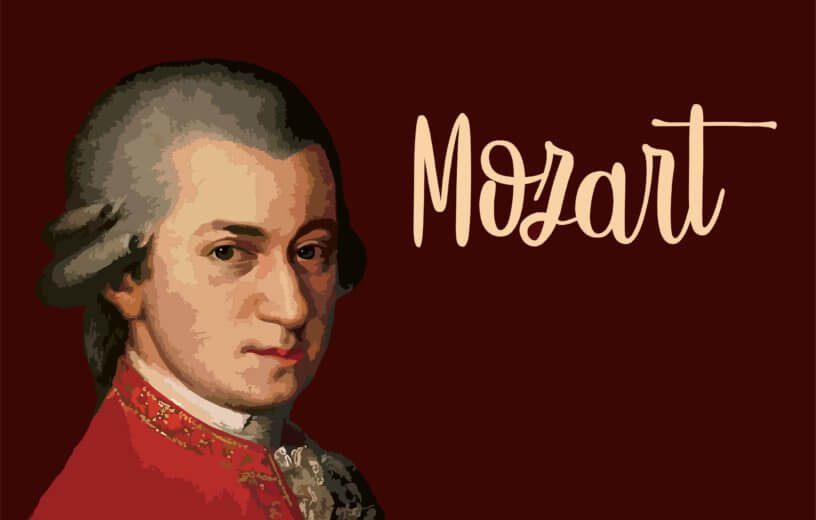VIENNA, Austria — Music has been shown to have healing properties and no composer has been connected to this more than Mozart. Now, scientists say that the 18th Century composer’s music is soothing to the brain and has an “anti-epileptic effect” which could potentially be prescribed as a therapy option.
In a study, patients listening to Mozart’s famous Sonata for Two Pianos K448 experienced a decrease in abnormal brain waves by one third. These abnormalities, also known as epileptiform discharges (EDs) are one of the main causes of seizures.
A fellow Austrian, Joseph Haydn, a friend and contemporary of Mozart, composed music with a surprisingly opposing effect. Listening to Haydn’s Symphony No. 94 only reduced EDs in female patients while increasing them by almost 50 percent in male patients. Scientists measured these changes using tiny intracerebral electrodes implanted into the brains of 18 epilepsy patients prior to surgery.
“To our surprise, there were significant differences between the effects of listening to Mozart’s K448 and Haydn’s No 94. Listening to Mozart led to a 32% decrease in EDs, but listening to Haydn’s No 94 caused a 45% increase,” says Professor Ivan Rektor, epilepsy specialist at St. Anne’s University Hospital in a media release.
What is ‘the Mozart effect’?
The phrase “the Mozart effect” was first coined 30 years ago after researchers discovered that listening to his music somehow boosts brain activity. Since then, studies suggest that children, even babies, will become more intelligent if they starting hearing Mozart’s music at an early age. Today, consumers can buy CDs and books specifically marketed for the development of young minds.
In the second part of the study, Prof. Rektor set out to explain the Mozart effect and its specific impact on epilepsy. He discovered that his 18 volunteers, split evenly between male and female, had quantifiably different responses to the two pieces of music.
While Haydn’s music suppressed EDs in the female subjects, it seemed to fuel them significantly in the male subjects. This showed Rektor that the acoustic properties including rhythm, dynamic, and tone have different impacts on the sexes.
While previous researchers have attributed the Mozart effect to emotion evoked from his music, Rektor says “the physical ‘acoustic’ features of the Mozart music affect brain oscillations – or brain waves – which is responsible for reducing EDs.”
What’s happening in the brain when we listen to music?
Scientists say they know that listening to music can trigger the release of dopamine, but direct proof of what is driving that remains elusive. Rektor’s study reveals the reduction in EDs is larger in the lateral temporal lobe — which is the part of the brain which participates in translating acoustic signals — rather than the mesiotemporal limbic region, which controls someone’s emotional response to music.
“The effects of listening to music on epilepsy cannot be explained by the effect of dopamine released by the reward system. Our patients were not music connoisseurs and said they were emotionally indifferent to the two pieces of music. There was, therefore, no reason to believe that K448 evoked more pleasure than No. 94,” Rektor says.
Researchers are now more confident than ever that the music people choose to listen to can have a profound effect on well-being. The results of studies like these could pave the way for individualized music therapies which prevent and control epileptic seizures.
Music exposure is a potential method of therapy in several neuropsychiatric diseases. Researchers have observed that patients with dementia can have their memory temporarily restored by listening to familiar songs.
Rektor and his colleagues have called for more research into the effects of music on the brain and its potential as a therapy. Epilepsy is one of the most common serious neurological conditions, affecting 60 million people worldwide – including three million adults and 470,000 children in the United States. More than one out of every 100 U.S. citizens has active epilepsy.
“Based on our research, we suggest studying the use of musical pieces with well-defined acoustic properties as a non-invasive method to reduce epileptic activity in patients with epilepsy,” Rektor concludes.
The findings appear in the European Journal of Neurology.
SWNS contributed to this report.
